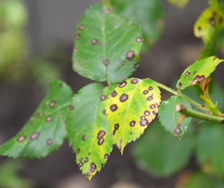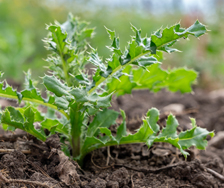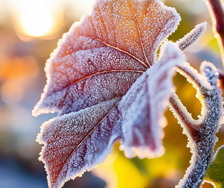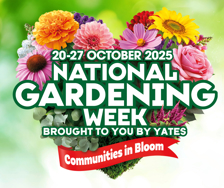Yates Account
Join now
Create a Yates account today!
Sign up to join the Yates Garden Club for monthly e-mails packed with seasonal inspiration, tips for success & exclusive promotions.
Plus if you’re a Garden Club member you can take part in the Yates Growing Community - a blog to share successes, get advice & win prizes in fun challenges along the way!

Forgot password
Enter the email address associated with your account, and we'll email you a new password.

"The fact we can be eating veg and salads within minutes of picking is still the greatest reward from the garden. Corn and potatoes are really special when they're this fresh.”
Neil Bauer
In this article series we’re chatting with Kiwi gardeners, to discover what it is about gardening that brings them the most happiness and satisfaction.
We’ve all heard about the emotional and practical benefits a garden can bring, so we’d like to share some of that good stuff with you. We’ll look at some amazing gardens, listen to great advice, and ask happy gardeners to talk about their pride and joy.
This time we’re visiting Neil Bauer.

Neil describes himself as a determined experimental gardener, always searching for a better way to grow something he's failed at, or that didn't grow the way he was hoping. Neil is a lifelong gardener and always had a family garden back in Durban with a wide variety of fruits and vegetables, so it was a natural step to start a garden on his arrival in New Zealand.
He began with a small raised bed on a concrete deck, handy for harvesting a fresh salad for the evening meal. This little kitchen garden produced abundant cherry tomatoes, red capsicums, spring onions and a colourful medley of lettuces. But what started out simple became an absorbing passion: his garden these days enfolds the entire house.
Neil is fascinated with the how's, the why's and the rich stories behind each vegetable, so he dives deep into finding out about them. "I do like reading up about the history of the varieties we grow. Each and every variety has been developed and saved for generations, and the new varieties are all developed for a purpose. Often, what we see as a 'not so great' variety, is only because we don't understand it."

Neil's current garden in the Auckland suburbs has its fair share of challenges! The soil is clay, and there's either too much rain or not enough. The best site for a decent-sized vegetable garden is on the South side of the property, which gets less than ideal hours of sunlight. On the upside, the garden has excellent protection from the wind, Auckland winters are mild, and Neil's local microclimate means frosts are pretty rare.
The garden is made up of raised beds as a solution to the heavy clay soil. Neil has cunningly covered one of the beds with a greenhouse, to allow growth over the winter. Every Labour Weekend, the greenhouse comes down to allow sunlight to reach across the garden unimpeded.


At the front of the property, a neatly mowed lawn with sharp edges helps any 'not-lawn' weedy opportunists to blend in. Lombardo lemon lime grasses create tunnels for the cat to play in, and Iceberg roses line the lounge window to conceal the road view from inside.
Moving around to the 'utility' side of the house, there's the greenhouse area, next to his rainwater harvesting setup. The vegetable garden starts here properly, wrapping the house with raised beds and brimming with vegies.
Moving around further, there's an outdoor living area with ferns, palms and grasses greening it up. Potted roses and petunias add splashes of colour. A grassy patch closes off the garden at the other end; this is where the BBQ, a potted lime and rhododendron ‘Cynthia’ live.

Neil focuses on soil health as the starting point for healthy plants and an abundant harvest. During winter, he adds compost, grass clippings, autumn leaves and pea straw to the beds, to help the micro-organisms living in the soil overwinter. This ensures the garden is ready to go for spring planting. As best practice, Neil tries to avoid digging and disturbing the soil and just lets Nature do its thing.
“I've found that 'no dig' isn't a great option for me, but I do try for as little soil disruption as possible.”

To water the garden Neil uses Olla pots – unglazed terracotta pots buried below the soil level that are filled with water and gently leak water into the surrounding soil. The pots are filled by a gravity feed system Neil created to supply the garden with constant moisture.

Neil's true passion lies in growing chillies, peppers and tomatoes. Although they're his favourites, they still have to jostle for space with all sorts of onions, carrots, lettuces, herbs and edible flowers! He's always on the lookout for new and unusual chillies to grow. "Chillies have so many variations; mixing and matching varieties can bring out the best of each."
On the first weekend of July, Neil starts his chillies inside over heat pads, and then moves them to the greenhouse to get them off to a flying start. This may seem early, but the greenhouse allows him to experiment with varieties he hasn't tried before. He likes to sow unfamiliar varieties a month apart and compare their progress, to discover the perfect starting time for each variety.
"With having so many chillies and tomatoes, our palate tends to favour the Mexican or Latin American flavours, so to complement these flavours I'll be growing culantro ( Eryngium foetidum, a herb similar to coriander) and epazote again. Tomatillos will also be something new to grow."

Q&A with Neil
Why do you love gardening?
“The fact that we can be eating veg and salads within minutes of picking is still the greatest reward from the garden. Corn and potatoes are really special when they're this fresh.”
What's your favourite thing to grow in the garden?
“My favourite vegetables will have to be the chillies and peppers that I grow, along with the tomatoes. There's such a great variety of them, and finding ways to bring out the best in them is always a fun kitchen experiment. Every tomato is a favourite for a different reason.”
What's the most unusual or quirky thing in your garden?
“I have a small passion for winter-grown chillies. These are grown as bonchi* plants in a humidity, temperature and light controlled cupboard in the garage. I grow small fruit varieties, from mild to very hot. I like to consider the leaf and flower variegation, to create pretty little trees."
*Bonchi cultivation uses traditional bonsai techniques to train chillies into miniature masterpieces.
What do you struggle with?
“The brassicas are where I struggle. By the time there's enough sunlight for them the cabbage moths are around, and netting isn't an easy option due to the space limitations and access. I don’t find them super exciting either, which doesn't help.”




What's your favourite Chilli?
"Well, this is a question that has no answer! There's so much in the capsicum family that is great. All up, I have 40 varieties growing this year."
- "If I had to choose a single chilli or pepper to grow, then it would be the Jalapeño. I grow them for Jalapeño Poppers."
- "For the quirky chillies, I have one called Monkey Face, which can often look like the face of a monkey."
- "The hottest is the White Carolina Reaper."
- "The prettiest will have to be Puerto Rican Yellow, it's a Habanero variety, so it's quite hot."
- "The oldest variety is the Aji Charapita, a tiny pepper with the heat of Habanero."
- "For the flavours of my childhood I grow Piri Piri and Malawi Picante."
- "Shishito is a great 'useful in the kitchen' chilli."

What's your favourite Yates product that you love to use, or swear by?
“Yates Black Magic seed raising mix is used for all my seedlings, also in the grow cupboard, Yates Gnat Barrier is a must for covering all the exposed soil.”
What's your ‘secret’ tip to get the best out of your garden?
“I'm a firm believer that the secret to a good garden is the soil."
If you were to start all over again, what would you do differently, and what would you do again?
“If I were to start over with my current garden, I'd get better soil and pay more attention to the need for covers. Olla pots would be set up even before the beds are filled.”
What advice would you give someone starting out?
"If you love salads, then try growing spring onions, lettuce, cherry tomatoes and snow peas. These are easy and rewarding. If budget allows, buy a few seedlings as well as seeds to get a quicker result. YouTube videos and books, including the Yates Garden Guide, are a great resource! Remember that people only post their successes on Social Media and everyday gardens have holes in the leaves, crooked rows and the odd gap - so be brave, and try things."

Neil’s Top Tips for September
- Tomatoes can go in a warm, sheltered, sunny spot. Early determinate types planted now may give you a few for Christmas.
- Protect early plantings or keep spares in case the weather turns. If in doubt - wait!
- Start potatoes now. Here in Auckland, we can grow them all year round. Remember that an 'early' variety means it's ready faster, not that it's planted earlier...you need to plant 'early' and 'late' varieties at the same time.
- Winter grown lettuce will start to bolt with the increasing temperature, so succession plant from now on for a constant supply.

















Share
Share this article on social media